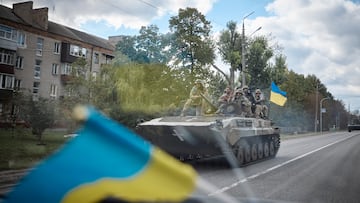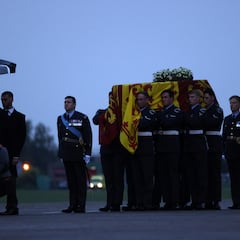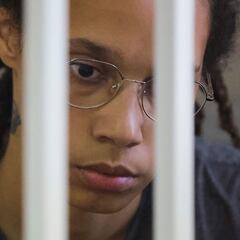What are the biggest problems that the Russian military is experiencing recently in Ukraine?
A combination of factors have allowed Ukraine to make its largest advance of the war, leaving the Russian invasion of Kharkiv in tatters.


The Ukrainian military has claimed it has seized more than 3,000 square kilometres of territory back from the invading Russians as large advance through the Kharkiv region has achieved huge results. While news organisations have been unable to verify the figure there is no doubt that the Russian army has been forced onto the backfoot.
Further evidence for this was the release of images of Ukrainian soldiers returning to cities like Izyum where were captured by the Russians on the outbreak of war. These gains have led to discoveries of gruesome mass graves which are the subject of a war crime investigation.
Ukraine has been on the defensive for much of the war. What has changed in the Russian military in the last six months that has allowed their opponents to make such a vast advance?
Disparate forces under different commanders
While people oft talk of a “Russian army” the truth is much less unified. Outside of the usual Russian army there are a number of groups fighting the war without a sole theatre commander. Supposedly there are nearly one million Russian soldiers fighting Ukraine, but as many as half could be fighting outside of the central military structure.
The private military contractor (PMC) group named Wagner is the most professional in the military. However, they are not confined the traditional formations as the rest of the army and fight on their own terms for different objectives. They number between three and five thousands troops.
Another section of the forces come from the Rosgvardiya, or the national guard. Their only armoured vehicles are trucks and they are not trained for warfare. Before the war they performed rudimentary security of the Russian state but now find themselves fighting a determined enemy in uncertain territory. One of the units is under the personal control of the Chechens but was decimated early in the fighting. The national guard is under the control of the Russian government.
The militia from the self-proclaimed Luhansk and Donetsk republics are the worst equipped with many units having to scavenge their own equipment. They have little to no heavy weapons.
У ополчения «ЛДНР» худшее оснащение, они буквально оборванцы, которые вынуждены собирать по волонтерам каски, бронежилеты, носки и прочее. Плюс они самые немотивированные. Потому что большая часть — согнанные насильно жители оккупированных территорий. 12/ pic.twitter.com/qEbAcYgiKi
— IanMatveev (@ian_matveev) September 15, 2022
As is clear, there are multiple strands of the Russian army with their own agendas, tactics, and reasons for fighting. Would a PMC unit rush to defend a village militia? Who makes key decisions for a front and how quickly are orders relayed? These are some of the basic issues.
Lack of adequate supply
Analysts had declared the war the end of the tank as a weapon on the battlefield due to the early losses suffered by Russian forces. While this may have been slightly premature, after all any tank unsupplied and unprotected by infantry is an easy target, the high numbers lost had to be replaced somewhere. It seems the Russians have been dipping into their large Cold War stockpile as evidenced by this captured T-62. Manufacture was discontinued nearly 50 years ago. The weapons are clearly obsolete on any modern battlefield.
#Ukraine 🇺🇦: Ukrainian soldiers in #Kharkiv got their hands on a Russian T-62 tank.
— Thomas van Linge (@ThomasVLinge) September 14, 2022
They can redeploy that one right to the museum of military artifacts. pic.twitter.com/BKFqi4OLLq
Supply doesn’t just equate to equipment but also manpower. So far the Russian government has refused to describe the war as a war, it is merely a “special military operation” being conducted by the army. While this has been plainly seen through by many the phrasing and what it means for Russian society also hamstrings the Russian army.
Refusing the put the nation into a state of war prevents a mass mobilisation of troops. Now the war has gone on so long, apparently unexpectedly, there is a need to redirect the narrative inside Russia. State propaganda decribes a “people’s war” but the little enthusiasm is shown in the lack of recruits as well as the constant recruitment drives and announcements of new targets for soldier numbers. Prisoners have been offered the chance of a reduced sentence for joining up for the war.
This video of Prigozhin giving a recruitment speech at a Russian prison is quite something. “I take you alive. I don’t always bring you back alive.” He says all who go fight in Ukraine, including rapists, will be amnestied on return. Deserters will be shot. Gives 5 mins to decide pic.twitter.com/AY6zpYixy5
— Matthew Luxmoore (@mjluxmoore) September 15, 2022
Promises of no conscripts have been quietly forgotten in the government, but not by the unfortunate Russians ordered to fight.
Poor training of the army
Both of the prior factors feed into this one. Ian Matveev, a Russian language source that has been an authority for many during the conflict, suggests that volunteers in the regular army have up to one month of training before being thrown in. Militia troops get none. These troops are simply inadequate to perform serious offensive and defensive actions on a battlefield.
Coupled with poor training is the killing of a large numbers of commissioned and non-commissioned officers. The BBC estimates that 1,000 officers had been killed by the beginning of September, three-quarters of whom were ‘frontline’ officers so-to-speak. These men are some of the hardest to replace due their experience. Those taking their place are earning their fighting wings in a disorganised mess, inheriting troops low on morale.
The outcome?
Related stories
A complement, of sorts, to the lack of officers and lack of combined command led to an inefficient fighting force around Izyum. If there was to be a Ukrainian breakthrough orders could not be relayed quick enough while the soldiers on the ground possessed little of the necessary equipment, motivation, or numbers to repel the attack.
The result is a Ukrainian victory that has begun to push the Russians back into the territory of their puppets; just a province away from Russia proper.

